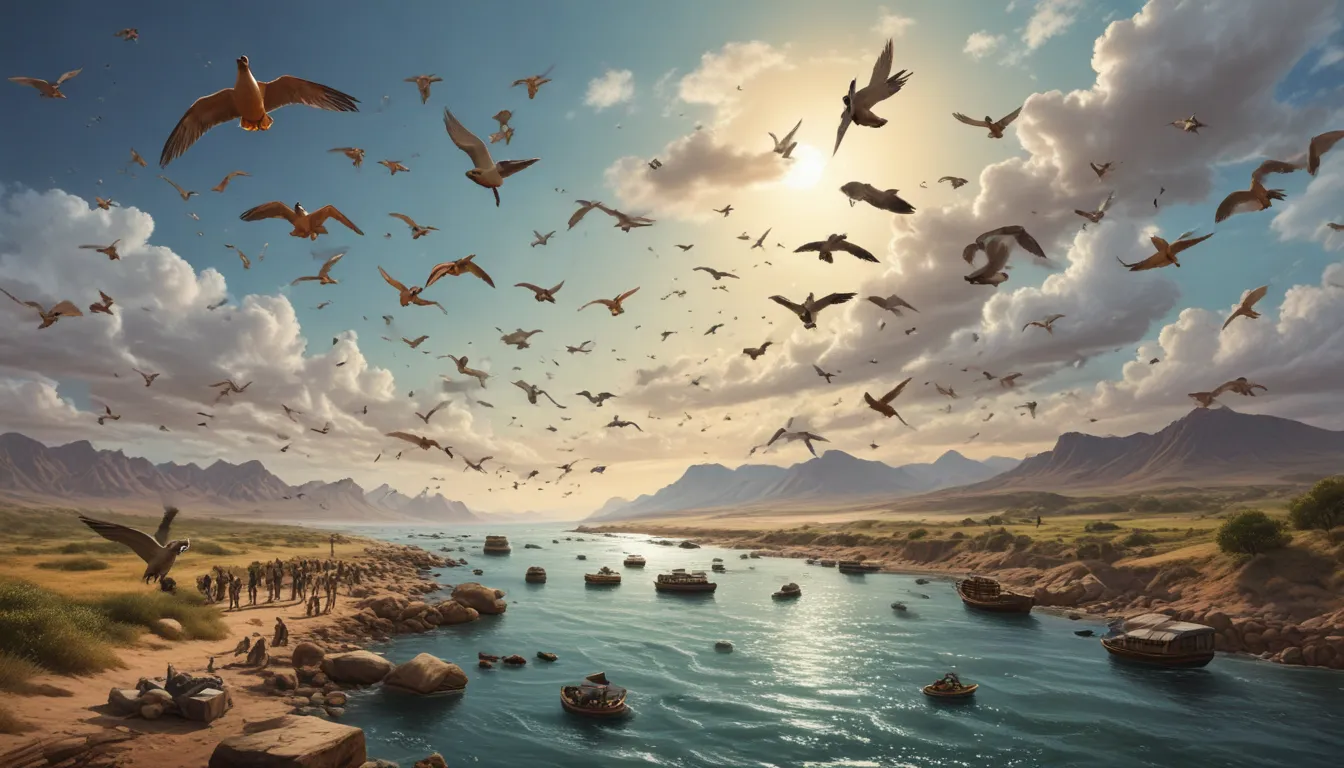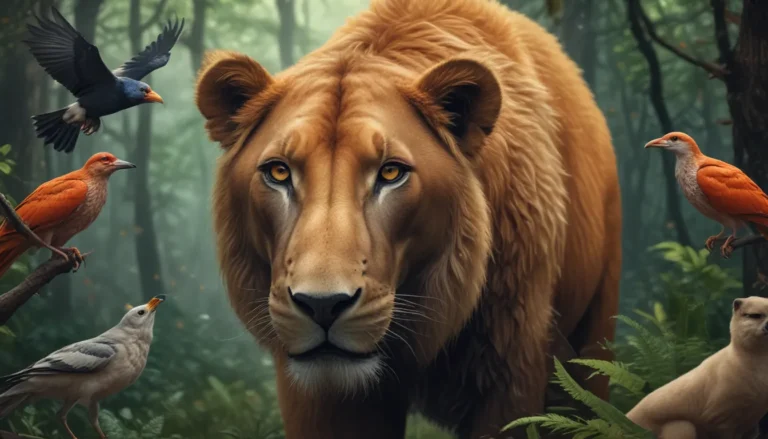A Note About Images: The images used in our articles are for illustration purposes only and may not exactly match the content. They are meant to engage readers, but the text should be relied upon for accurate information.
Migration is a captivating phenomenon that transcends species boundaries, captivating us with the incredible journeys that animals undertake in search of sustenance, shelter, and survival. From the epic migrations of wildebeests to the astounding navigational abilities of birds, migration showcases the adaptability and resilience of nature in the face of challenging environments. In this article, we will explore ten astounding facts about migration that will deepen your appreciation for the remarkable journeys undertaken by various species. Get ready to be amazed by the wonders of migration and the extraordinary feats achieved by these incredible travelers.
The Great Wildebeest Migration: A Spectacle Like No Other
One of nature’s most spectacular events, the Great Wildebeest Migration sees millions of wildebeests embarking on an arduous journey across the Serengeti in search of food and water. Covering a distance of over 1,800 miles, these resilient herds face numerous challenges along the way, making this migration a true test of endurance and survival.
The Arctic Tern: A Champion of Long-Distance Travel
Arctic terns hold the record for the longest migration route of any bird, traveling from their breeding grounds in the Arctic to their wintering grounds in the Antarctic. Covering an astonishing distance of up to 44,000 miles round trip, these small birds showcase the incredible stamina and determination required for such a formidable journey.
The Monarch Butterfly: Nature’s Marvelous Migrant
Every year, millions of monarch butterflies embark on a remarkable journey spanning up to 3,000 miles from Canada and the United States to Mexico. Driven by the need to find suitable breeding grounds and escape harsh winter conditions, the monarch butterfly migration is a true marvel of nature’s ingenuity and adaptability.
The Humpback Whale: Masters of the Deep
Humpback whales traverse thousands of miles between their feeding grounds in cold polar waters and their breeding grounds in warmer tropical waters, showcasing the incredible navigational abilities and endurance of these majestic creatures.
The Genius of Magnetoreception in Birds
Many species of birds rely on the Earth’s magnetic field to navigate during migration, a remarkable ability known as magnetoreception. By detecting and following the Earth’s magnetic field lines, birds can stay on course during their long and challenging journeys, highlighting the ingenious adaptations of nature.
The Serengeti Ecosystem: A Symphony of Life
The wildebeest migration plays a vital role in the Serengeti ecosystem, as the herds fertilize the soil with their nutrient-rich droppings, promoting the growth of grasses and supporting a flourishing ecosystem teeming with diverse wildlife.
The Epic Journey of Salmon
Salmon undertake a remarkable feat of endurance by navigating upstream against strong currents, leaping up waterfalls, and overcoming formidable obstacles to reach their spawning grounds. This epic journey can span hundreds or even thousands of miles, showcasing the resilience and determination of these remarkable fish.
Soaring with Thermals: Birds of Prey in Flight
Birds of prey rely on thermals, upward currents of warm air, to conserve energy during migration. Soaring in thermals allows these birds to cover great distances with minimal effort, highlighting the strategic efficiency and resourcefulness of nature.
Ensuring Species Survival Through Migration
Migration is a crucial strategy for species survival, allowing animals to move to different habitats in search of resources, escape unfavorable conditions, and ensure the continuation of their species. By undertaking long and challenging journeys, animals increase their chances of survival and reproductive success in dynamic and changing environments.
Navigating Environmental Cues: The Timing of Migration
The timing of migration is often influenced by environmental cues such as changes in temperature, daylight hours, and food availability. Animals rely on these signals to determine when it is time to begin their arduous journeys, showcasing the intricate and adaptive nature of migration patterns.
Conclusion: Celebrating the Marvels of Migration
Migration is a captivating phenomenon that transcends species boundaries, showcasing the adaptability and resilience of living organisms in the face of ever-changing environments. Whether it is birds soaring across continents or fish navigating vast oceans, migration exemplifies the remarkable feats achieved by animals in pursuit of survival and prosperity. By understanding and appreciating the wonders of migration, we can cultivate a deeper respect for the delicate balance of our planet and the diverse species that inhabit it.
FAQs: Your Migration Questions Answered
Q: Why do animals migrate?
A: Animals migrate for various reasons such as seeking better food sources, escaping harsh climates, finding suitable breeding grounds, or avoiding predators.
Q: How do animals know where to migrate?
A: Animals navigate during migration using a combination of cues such as celestial bodies, magnetic fields, landmarks, and even their sense of smell and sound.
Q: Which animals are known for long-distance migration?
A: Birds are the most well-known long-distance migrators, but other species such as whales, butterflies, caribou, and many fish species also undertake impressive migrations.
Q: Do all animals migrate in groups?
A: No, while some animals migrate in large groups for safety and social reasons, others may migrate individually or in smaller family units.
Q: Are there risks involved in migration?
A: Migration poses various risks to animals, including predation, exhaustion, weather hazards, and obstacles like buildings, roads, and fences constructed by humans.
Q: Can migration patterns change over time?
A: Yes, migration patterns can change due to factors like climate change, habitat destruction, and human activities. Some species may alter their routes or timing of migration in response to these changes.
Q: How do scientists study animal migration?
A: Scientists study animal migration using various methods, including satellite tracking, banding or tagging individuals, radar technology, and citizen science initiatives.
Q: Does migration affect human populations?
A: Yes, migration can impact human populations through agricultural practices, hunting and tourism opportunities, and efforts to conserve migratory species and their habitats.
Q: Are there any negative impacts of migration?
A: In some cases, migration can result in conflicts between humans and wildlife, such as damage to crops or disruption of human activities. However, efforts are made to minimize these negative impacts through sustainable practices and conservation measures.
Q: How can people help in preserving migration routes?
A: People can contribute to the preservation of migration routes by supporting conservation organizations, advocating for habitat protection, reducing pollution, and promoting sustainable land-use practices.
In Conclusion
Migration is a captivating phenomenon that unites species in a shared pursuit of survival and prosperity. By exploring the marvels of migration, we gain a deeper understanding of the intricate workings of the natural world and the vital role that these journeys play in maintaining the balance of ecosystems. As we marvel at the incredible feats achieved by animals in pursuit of their migratory paths, let us celebrate and protect the remarkable diversity and resilience of our planet’s migratory species.






